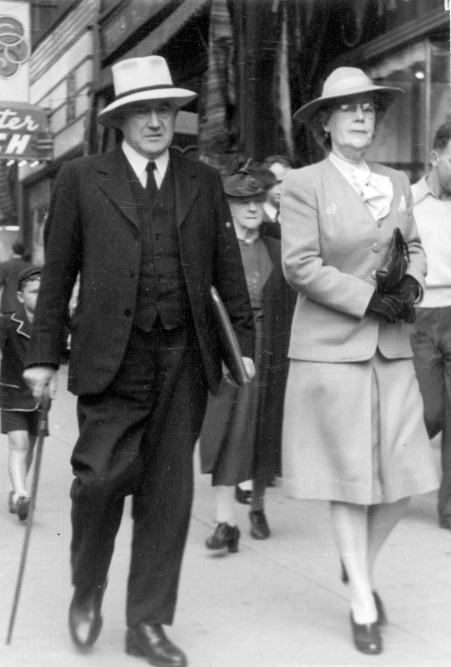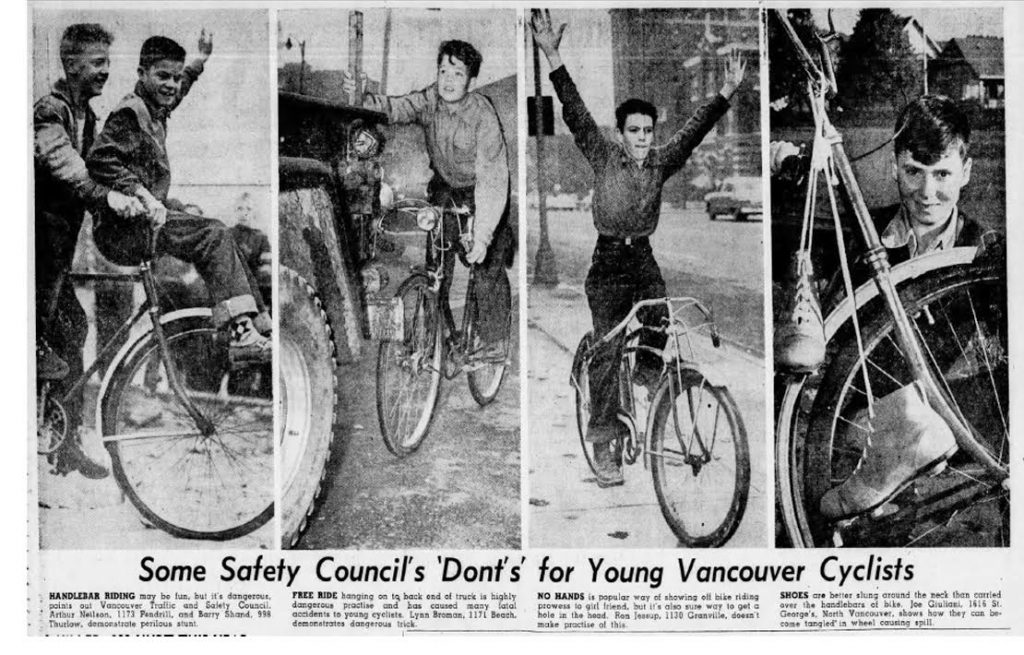Summaries of Talks and Field Trips - 2023
Glimpses of the Past through description, related books and internet connections
From 'Killer' to 'Orca': A West Coast Story
Today, there is no more prominent symbol of the West Coast than the killer whale (Orcinus orca). Yet just a few decades ago, orcas were reviled and shot throughout the region.
Environmental historian Dr. Jason Colby took us on a journey of exploration of our transformed knowledge of and relationship with this apex marine predator.
The author of Orca: How We Came to Know and Love the Ocean’s Greatest Predator (Oxford, 2018), Dr. Colby incorporated material from interviews, archives, and personal explorations along the Pacific Coast.
Youth Hostels and Hostile Locals: Vancouver’s “Battle of Jericho,” 1970
Oct 26, 2023 MoV Linda Mahood
Fifty-three years ago, Vancouver Police laid siege to a temporary youth hostel in Point Grey. They came equipped with riot gear and even heavy artillery. The VPD didn’t come alone, either. They were supported by members of the RCMP and soldiers from the Canadian Armed Forces. What they confronted was a few hundred young Canadian travellers, vagabonds who had mostly hitchhiked their way across the country. Expelled days earlier from the Beatty Street Armoury, they were resisting removal from another army facility. The Liberal government in Ottawa had made the facilities available to travelling youth in the hopes that doing so would solve a ‘hostel crisis’ and would support young people in their efforts to “See Canada First.”
As University of Guelph history professor Linda Mahood describes it, the “Battle of Jericho” was the culmination of several long-term and immediate trends.
The “Battle of Jericho” on 15 October 1970 attracted a lot of local attention at the time but it was eclipsed in some measure by events in Quebec. Only two days later, Pierre Laporte was murdered by the Front de Liberation de Québec, the grimmest moment in the October Crisis. This was no ‘summer of love,’ more an ‘autumn of anxiety.’
Defying Convention: the life of Helen Gregory MacGill
In Helen Gregory MacGill (1864-1947), Ontario’s elite produced a New Woman who startled contemporaries. A pioneering co-ed at the University of Toronto and a bohemian journalist, she took a younger man as a husband after a week’s courtship and expressed sympathies with Asian migrants. A feminist in politics and in print, she spotlighted BC’s need for a revolution in the legal rights of women and children and served as a feminist juvenile court judge. Helen challenged expectations forgender and class throughout her influential life and bridged two feminist generations (from her activist mother to her aeronautical engineer daughter, Elsie Gregory MacGill). Although her legal career is often recalled, her passionate, sometimes scandalous, early life and wider efforts as a Vancouver feminist activist are the focus of this evening’s presentation.
A Tour of the Orpheum Theatre
This special tour, arranged by Bill Allman of the Entertainment Hall of Fame, revealed secrets of the theatre’s history. It included a visit to its Wurlitzer organ conducted by Tom Carter, VHS Treasurer, who surprised us with an impromtu performance. [Click on button below to view video]
The Orpheum Theatre was opened in 1927 as a movie theatre palace and vaudeville house. The Orpheum was designed by Seattle-based Scottish architect Benjamin Marcus Priteca in a “conservative Spanish Renaissance” style and financed by Vancouver businessman Joseph Langer for $1.25 million. Following the end of vaudeville’s heyday in the early 1930s, the Orpheum became primarily a movie house under Famous Players’ ownership, although it continued to host live events. In 1973, for economic reasons, Famous Players decided to gut the inside of the Orpheum and convert it into a multiplex. A “Save the Orpheum” public protest and fundraising campaign was launched, and the Orpheum was saved. On March 19, 1974, the City of Vancouver bought the theatre for $7.1 million, with $3.1 million coming from the city itself and $1.5 million from each provincial and federal government. The Orpheum closed on November 23, 1975, and the renovation and restoration was done by the architectural company Thomson, Berwick, Pratt and Partners. It re-opened on April 2, 1977, and has since been the permanent home of the Vancouver Symphony Orchestra. Tony Heinsbergen, a U.S. designer who originally chose the colour scheme for the interior (ivory, moss green, gold and burgundy), was brought back fifty years later for the renovation.
Bill Allman is president of the BC Entertainment Hall of Fame, owner of Famous Artist Limited and a “recovering Vancouver lawyer”. Having worked as an entertainment lawyer and associate producer on an array of television projects, as well as holding a position as an adjunct professor of law at UBC, Bill has also found time in the last 25 years to be a concert promoter, theatre manager (the Vogue) and president of Vancouver’s legendary Theatre Under the Stars.
Artist Tom Carter, based in Vancouver Canada, is best known for his work exploring sombre and gritty working-class urban environments that reveal glimpses of hope and warmth.
Dressed for History at the MoV: Why Costume Collections Matter
A special tour with curator Ivan Sayers of the costume exhibition at the Museum of Vancouver, concluded with coffee and cookies in the MoV boardroom.
Four local collectors have recognized the importance of preserving costumes to document the past and inspire the future. Ivan Sayers, Claus Jahnke, Melanie Talkington and the members of the BC Society for the Museum of Original Costume (SMOC) are fashion historians with significant collections that feature some of the rarest garments and fabrics in the world.
The Museum of Vancouver has invited these collectors to share their knowledge of costume history by showcasing pieces from their collections. Dressed for History: Why Costume Collections Matter posits that fashion is an enduring expression of personal identity and social change. This exhibition confirms Vancouver as home to world-class costume historians.
Ivan Sayers is a fashion historian who specializes in the study of women’s, men’s, and children’s fashions from 1700 to the present. He has collected period costumes for over 50 years and now has one of the largest and most comprehensive private collections of historical clothing in Canada.
Field Trip: Vancouver Public Archives

Located in Vanier Park, the City of Vancouver Archives houses enough five-inch acid-free boxes of records to stretch eight kilometres if placed end to end. It’s a long way from the archives’ modest beginnings, when the city archivist, a mercurial figure known as Major James Skitt Matthews, packed up the city’s collection and took it to his house in “a fit of pique.”
The archives moved in 1933 to the temporary City Hall in the Holden Building at 16 East Hastings, then to the new City Hall in 1936, and then to the Vancouver Public Library at Burrard and Robson in 1959. Its current building in Vanier Park opened in 1972, and was the first building in Canada built specifically as an archive, and arguably one of the first buildings to have a green roof, as it is low and fitted into the landscape, with grassed platforms over its storage areas.
Reckless Riders and Reckless Writers: Cycling Accidents in the News since 1886
John Belshaw presented his entertaining talk on cyclists, their accidents, and the coverage of them in the news over the years.
Besides being the VHS program director, John Belshaw is a professor of history at Thompson Rivers University. With his partner Diane Purvey, he authored the book Vancouver Noir, and was the ringleader for the collaborative history collection Vancouver Confidential. He is, not surprisingly, an avid cyclist as well as a keen observer of the changing attitudes in society towards crime and tragedy.
Collecting & Painting Vancouver's History
Apr 27, 2023 MoV & Online Tom Carter
Tom Carter talked about his fascinating career as an artist, musician, and collector of Vancouver’s entertainment history. His monumental paintings of Vancouver during the 1940’s and ‘50’s re-capture and re-imagine downtown street scenes and old theatres, often from a bird’s eye view. Tom’s collection includes architectural pieces of the Pantages Theatre and scrap books from the legendary Marco Polo nightclub.
Incorporation Day Social Event
Apr 02, 2023 UBC Golf Club
Our social event on April 2nd, the first ‘non-lecture’ gathering since our last luncheon in 2019, was highlighted by the presentation of our Award of Merit to Musqueam artist Susan Point, who was to have received the award in 2020 when we were shut down by Covid.
About 40 members and guests enjoyed conversation and canapés. It was great to see members old and new, and special guests City Archivist Heather Gordon, Bill Allman of the BC Entertainment Hall of Fame, Maurice Guibord of the BC Francophone Historical Society, and Jill Kelly of the Friends of the Archives.
The People of the Post- A Potted Memoir of Vancouver in the Gay '70s
Mar 23, 2023 MoV & Online Kevin Dale McKeown

Journalist Kevin Dale McKeown describes the early days of Vancouver’s Gay and Drag communities in the 1970s, including his role creating the first Gay column, QQ Writes, for the Georgia Straight in 1970. He surveys the “pubs, clubs and tubs” of the time, ending with the arrival of AIDS in 1982 and its profound effect on his milieu.
The Naming and Renaming of Vancouver Schools, 1872–2022
Feb 23, 2023 MoV & Online Lindsay Gibson
Lindsay Gibson, Associate Professor in the Department of Curriculum and Pedagogy at the University of British Columbia, spoke on his research into the historic school names of Vancouver’s three founding municipalities – the City itself, South Vancouver and Point Grey – and the moves to reevaluate them in the 21st century based on historical research and changing values. His research acknowledges the contribution made by Mallory Davies, a PhD. candidate in the Department of History at the University of Waterloo.
Hastings Mill: The Historic Times of a Vancouver Community
Jan 26, 2023 MoV & Online Lisa Anne Smith
In the summer of 1865 when Captain Edward Stamp began to organize the construction of a small sawmilling operation on the south shore of Burrard Inlet, he likely never realized that a future metropolis was in the making. The fledgling Stamp’s Mill, later to become known as Hastings Mill, was Vancouver’s first community — a townsite inhabited by an eclectic mix of colourful characters from widely diverse backgrounds. Life centered on the iconic Hastings Mill Store, where one came to obtain groceries, hardware, mail and the warmth of human interaction around an oil drum fire.
Historic times aplenty unfolded at Hastings Mill. Here residents rallied to assist victims of the Great Vancouver Fire in 1886. Cargo loads of lumber of legendary size and quality were shipped to markets near and far. Dominion Day festivities were celebrated in fine style on a sports field of mill sawdust. Indigenous occupants of the region engaged in mill employment and commerce. Chinook jargon was widely spoken, the multi-lingual trade language of the era. When time and local demographics ultimately spelled the death knell for the sawmill and its weathered structures in 1930, an unlikely group of determined ladies rose to the challenge of saving the Hastings Mill Store, Vancouver’s oldest building.
VHS member Lisa Anne Smith spoke about her latest book, the finely researched Hastings Mill: The Historic Times of a Vancouver Community on Vancouver history, the Burrard Inlet waterfront and its first factory.












![British journalists [outside Hastings Sawmill]](https://vancouver-historical-society.ca/wp-content/uploads/2023/08/3ccadd07-3fbf-4684-a8c9-2b12289fe8b1-A02212-1024x664.jpg)